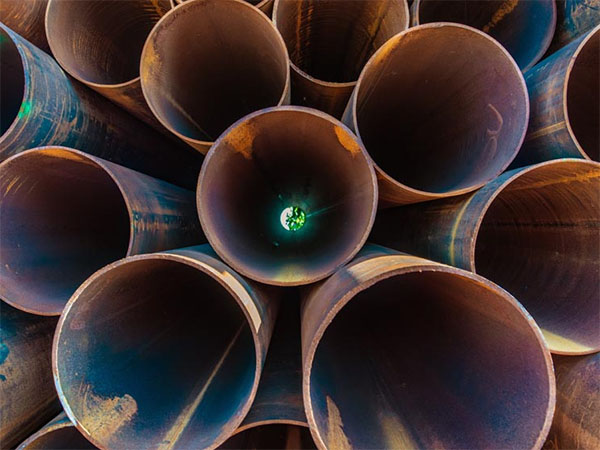Steel pipe piles are a type of cylindrical steel structure and a common deep foundation structure. They can transfer the load of the superstructure to the deep hard soil or rock layer by directly driving or drilling into the foundation through frictional resistance and end bearing force. The following is a detailed explanation of the definition, types, manufacturing processes, features and application scenarios of steel pipe piles for everyone.
What is a steel pipe pile?
Steel pipe piles are a type of structure that uses steel pipes as load-bearing materials. By driving or vibrating them into the foundation, the loads of buildings are transferred to the harder soil layer deep underground. It is commonly used in engineering fields such as buildings, Bridges, docks, offshore platforms and subways that require deep foundation support.

Steel pipe piles can be driven in at open or closed pile ends, tips or sheets. Different types have different properties.
Open pile: The tip of this type of pipe pile is not capped, allowing water to pass through. Usually, the soil inside the pile is cleared after penetrating the rock layer, and then concrete is poured.
Sealing pile: The bottom of the pile is welded with steel plates (plate) or rock shoes (rock shoe) to enhance the end bearing capacity and is used in rock strata.
Concrete cast-in-place piles: The piles are filled with steel bars and concrete to enhance their load-bearing capacity and corrosion resistance.
Steel pipe type sheet pile: Steel pipes are assembled longitudinally, connected with grooves or mechanically, which can form a connected cofferdam or retaining wall. It not only has the characteristics of pile foundation but also can intercept water.
Steel pipe piles are typically manufactured using three processes: ERW, LSAW, and SSAW.
ERW: Roll the original plate into a cylinder and weld the two ends through high-frequency current. This type of steel pipe is mainly used for fences, scaffolding, and some pipelines for gases and fluids. It is suitable for medium and small diameter piles and has a relatively low cost.
LSAW: Straight seam submerged arc welded pipe is made by rolling a discontinuous section of pipe into a cylinder and then welding it longitudinally and transversely. This method can produce the largest and thickest pipe sections, which can be used for load-bearing piles, composite wall piles or other purposes. It is suitable for large piles with large diameters and thick walls.
SSAW: It is formed by spiral forming and welded along the edge of the steel plate in a spiral manner. It is usually used as the main pile of the composite wall and also as the dredging pipe.
Installation method
Impact driving: Use an impact hammer to forcefully strike the top of the pile, driving the pile body to the predetermined depth.
Drilling/bored method: Drilling holes first and then driving piles in hard ground or rock areas can effectively reduce vibration and noise.
Static pressure/static hammer entry: Slowly press in with hydraulic pressure, suitable for urban environments that are sensitive to the impact on buildings.
Advantages and Limitations
Advantages: It has high axial load-bearing capacity and bending resistance. The construction is flexible and the pile length can be adjusted by welding. It has strong structural combination capacity and can fill the concrete territory to form composite piles, enhancing the bending resistance and anti-corrosion performance.
Limitation: Steel pipe piles are prone to corrosion when exposed to wet soil or seawater for a long time, and anti-corrosion measures need to be taken. The demand for professional equipment is relatively high, and the cost of manufacturing large pile foundations is also relatively high.
Main application fields
High-rise and heavy-load building foundations: Adapt to weak soil layers and provide stable support.
Bridges, ports and docks: They bear high pressure and hydrodynamic loads.
Subway tunnels and underground projects: They can effectively reduce soil disturbance and protect adjacent structures.
Composite retaining structure: Combined sheet piles form continuous walls for retaining soil, dredging, etc.
Offshore wind power piles and anchor piles: Large-diameter steel pipes are used for cross-sea structure foundations, such as single-pile foundations.
Summary
Steel pipe piles occupy an important position in the field of deep foundations due to their advantages such as high load-bearing capacity, flexible dimensions, fast construction and low environmental disturbance. It has been widely applied in urban architecture, Bridges and Marine engineering.
Read more:Difference between pipe pile and sheet pile? or Steel sheet pile
